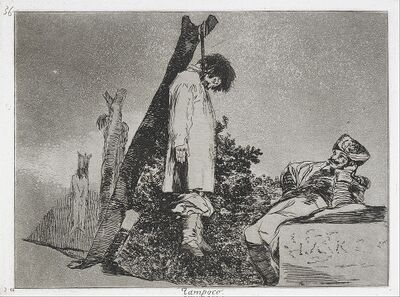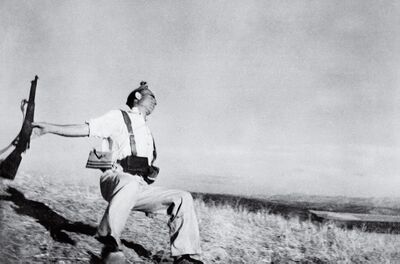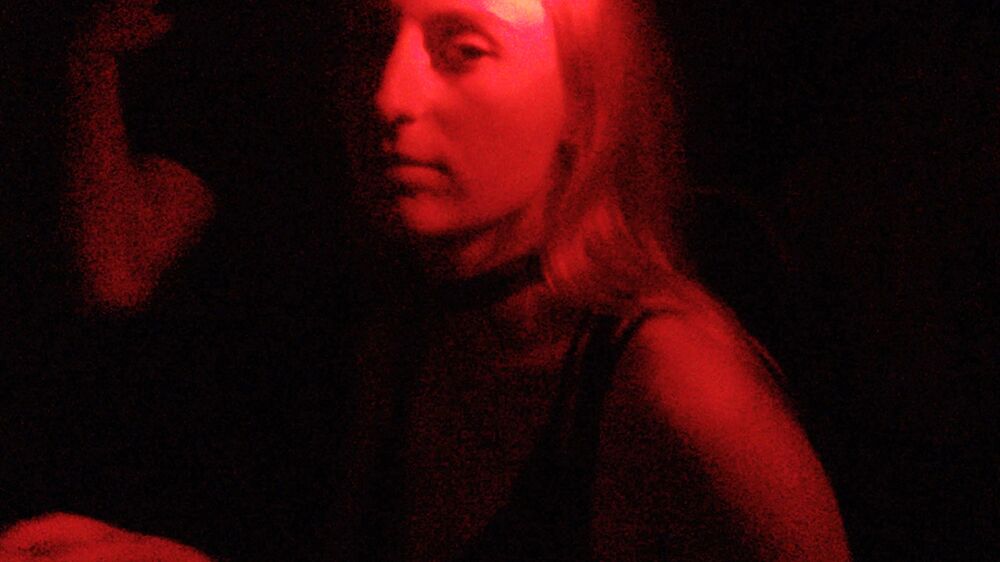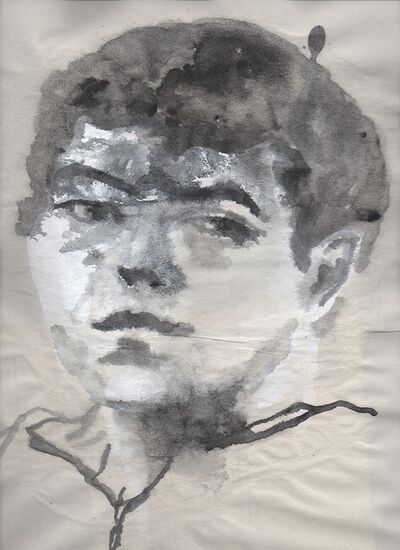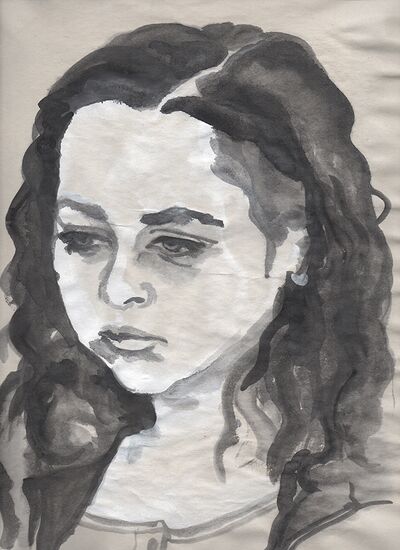User:Research and Methods: Difference between revisions
No edit summary |
|||
| Line 43: | Line 43: | ||
<p><span style="font-family: Andale Mono,AndaleMono,monospace; font-size: 10;">2. First draft:“Il mio volto è carcere d’amore” (My face is prison of love) is an open archive of life portraits composed by a hundred gouache paintings. On each sheet of thin, pale paper the faces of the subjects appear as delicately and gradually as a photograph does during the development phase sometimes to stare at the viewer, sometimes to listen to it. They are formed by spots of black and white - with a rare, furtive intrusion of blue - that naturally expanded on the wet surface of the paper, now dry and wavy. Because of the low-quality of the support on which water and gouache were applied, the portraits keep changing in time colourwise and shape-wise. | <p><span style="font-family: Andale Mono,AndaleMono,monospace; font-size: 10;">2. First draft:“Il mio volto è carcere d’amore” (My face is prison of love) is an open archive of life portraits composed by a hundred gouache paintings. On each sheet of thin, pale paper the faces of the subjects appear as delicately and gradually as a photograph does during the development phase sometimes to stare at the viewer, sometimes to listen to it. They are formed by spots of black and white - with a rare, furtive intrusion of blue - that naturally expanded on the wet surface of the paper, now dry and wavy. Because of the low-quality of the support on which water and gouache were applied, the portraits keep changing in time colourwise and shape-wise. | ||
During the realisation, nothing came in the way of the meeting between the author and the subjects' eyes: as for the painting, both of them turned liquid under the pressure of each gentle brushstroke to pour themselves into each other like in a wineskin. Life portraiture offers the possibility to create an intimate, intense atmosphere that connects the artist to the subjects as if they were reflecting their images into each other's eyes so deeply that it made me question if I was painting their portraits or my own.</span></p> | During the realisation, nothing came in the way of the meeting between the author and the subjects' eyes: as for the painting, both of them turned liquid under the pressure of each gentle brushstroke to pour themselves into each other like in a wineskin. Life portraiture offers the possibility to create an intimate, intense atmosphere that connects the artist to the subjects as if they were reflecting their images into each other's eyes so deeply that it made me question if I was painting their portraits or my own.</span></p> | ||
[[File:Keir.jpg|400px]] | |||
[[File:Teresa.jpg|400px]] | |||
Revision as of 23:06, 19 November 2019
Session three: Synopsis
Susan Sontag, Regarding the pain of others, 2003
Because of its undeniable, ostentatious reference to reality, photography has the democratic tendency to be considered a medium of truth and the camera “the eye of history” (Brady). While series of works of art such as The Disasters of War (1810-1820) by Francisco Goya (1746-1828) were not even expected to depict reality as the eye receives it since it was the artist that filtered and synthesized it, photography or film claims to represent exactly what was before the camera. Nevertheless, photography is always the product of a choice which takes place in the act of framing in the first place. To frame doesn’t only mean to choose that portion of reality to be captured by the camera but also to choose what stays out of it, unshown, unsaid. By mentioning the role that photography had in several wars beginning with the Spanish Civil War fought from 1936 to 1939, Sontag analyses the voyeuristic pleasure that humans show towards the horrific reality of war, deconstructs the myth of transparency of photography, and affirms that pictures are not only traces that can talk for themselves and need no explanation to be read: they always wait for the viewer to be re-interpreted, re-signified. (200 wrds)
Session two: Reviewing self-directed research
Stage 3: edited text on my self-directed research
I have been writing for two years, every day on ordinary black diaries with hard cover that looks all the same and give nothing of their content away at a first glance. When I started, I had designated one diary to poetry and one to proses and so they lived apart from one another for a while like two parallel railway tracks. I now realize that not only my approach to writing was different depending on which of the two books I had in my hands but, eventually, even my posture changed. Poetry used to be the place where I explored the gentleness and sweetness of writing while proses was the collector of its crudity. Somehow, proses even felt more “institutional” back then, as if it demanded to be clear enough to be read and understood by someone else and so I set at my desk with straight back, sour faced. On the contrary, the grammatical freedom I got from poetry relaxed me so much from a performative point of view that I could even lay in bed while I wrote it. However, approximately after one year, I revisited this division I first made for it felt more as a simplistic way of seeing the act of writing itself than an actual statement of any sort. Moreover, I started feeling as if my writing wasn’t going anywhere so well protected behind the shield of that division. Suddenly, what was more crucial to me was not the form in which I was expressing myself but the space of the page and the act of writing itself. Eventually, prose and poetry merged together within the space of the diaries and contaminated one another. It’s easier to define what I am not doing with all this writing I’m making: I am not writing a novel, though I consider and treat my diaries as if they were books, I am not writing the next revolutionary philosophical essay that will change the world, I am not only supporting my artistic practice theoretically speaking, I am definitely not journaling out of boredom, and I am not even only pleasing myself with it. I write intimate chronicles of the world inside and around me, I nail down nightmares and dreams before they vanish away in the torpor of the day - for dreaming is the only place where my imagination rises again -, trying to reduce that little gap between reality and how I perceive it. Every piece always begins with the date/time of the day and name of the city from which I’m writing as it’s done in field reports. In fact, I consider my diaries ad a battlefield where I can face reality as much as a tool to participate to it. Writing every day with discipline led me out of a long period of horrifying creative inactivity in which I found myself suffocated by the amount of images shot in my eyes like bullets every day and I couldn’t produce any of my own anymore. In the act of writing, I found something more concrete and honest than how images seemed to be, not in the sense that I didn’t recognize to images the power to face, interpret, depict, or modifying reality but there’s always something so very sensual about them that confounded me and made me lose focus. More specifically, handwriting gave an actual body to the ball of thoughts that I had on my mind and helped me to untwist it for I felt that I didn’t have enough room to keep it all in. The extremely physical gesture of writing gave me a rhythm to activate a creative process again. At this very moment, I am mostly writing about two topics: an interrupted love story - that has actually never begun - and my prays to God. I consider writing to be fully part of my artistic practice. It relates to the other works I made on several levels. Both in writing and image-making, I tend to have a silent, observing attitude, I tend to express my wonder for the object of my work rather than give it a definition or say what I think of it. On another level, writing is like a wineskin from which image-making happens to drink at times. Even if these two acts are deeply connected, I take risks in writing that I still can’t take in image-making, I dare to be honest to my core even when my writing does not please me. I rarely go back and read what I wrote once it’s written, at times I even forget about what I wrote completely. The one time I did read it I couldn’t recognize myself as the writer for the writer seemed so different from the reader I was when I read it. I would really like my writing to crystallize in an editorial piece one day, to be able to stand without the support of images, though I can’t really say what genre, or form, would that be.
Stage 2: b (Anh) interviews a (Annalisa) - What are you making? I have been writing for two years, every day on black diaries that looks all the same. In the beginning I had divided them into poetry and proses, however I revisited this limitation and discontinued the division and merged the writing. What was more important were the pages and the act of writing itself. It is an intimate chronicle of nightmares, dreams. Why are you making it? Due to inactivity creatively, I wanted to still participate and found that writing was a means to be connected to creativity. I had too much on my mind and it had to go somewhere; I could not keep it in. It helped me to look at things at a distance. Spiritual in the everyday life. To create something concrete and tangible. At the moment I am writing on two topics, an interrupted love story that never began, questioning if my treatment of this person is right or good enough, and my prays to God. Does to relate to other things you have done? Yes. My approach to it, observing point of view, things reveal themselves in a profound, simple way. Praying by writing. Images come out of it as reflections, poetic. The process is the same as the past. How is it different to other things you have done? This is freer. My attitude towards writing everyday is strict and military. My writing is a source of material to draw from as if it was wineskin, to grab a drink at anytime. But I do not know where it is heading however I am no longer writing poetry. The last poem that was written was a violent poem. What are the most significant choices have you made recently? Rarely do I read this writing, at times I forget it completely. The one time I did read it I did not recognized the person in the writing, as though I never wrote it and it was a different person. The next step, the presentation of the work gets in the way. I want it to find a form or shape with editing and objectivity. Dare, risk. What way will the audience receive this. I am not writing a novel. The notebook is battlefield about reality, dramatic, tension, a way to reduce the gap between people. I need the gesture, rhythm, extremely physical experience of writing.
Session one: What, how, why
Fantasmi di carne (Ghosts of flesh)
1. Corrected version: A sequence of dusty, pictorial screenshots depicts the ambiguous atmosphere of a techno party onto a sound carpet that takes off from the music played by the Dj to the humid and melancholic ambient of a church. The viewer is invited to be part of a heterogeneous group of young people who are approached with both panoramic and close up frames by the eye of the camera. Some of the dancers are captured while drinking their beers, some others in the attempt to communicate to the person right next to them - probably failing in drowning out the loud music in the background -, and still others stealing a kiss to a fellow dancer. Their faces are veiled with a sense of rapture as if they were present to themselves but also lost somewhere inside them wether with open eyes or closed onto an inner, personal space. They're swaying continuously in answer to the voice of music like devout Jews in prayer. Sometimes, the grainy texture of the pictures would reveal sharper details of the dancers such as the colour of their eyes, their young beards, a plastic glass held by delicate fingers as if it was a precious chalice, or a necklace with a cross charm made of wood. Other times, they would seem to vanish away in vapours of indigo and ochre as if they were shadows. By the time of the video, the attention of the viewer is driven from a collective perspective of the event to the more intimate's of a girl. As she appears on the screen like a byzantine icon, the soundtrack lands to the spiritual chants sang by a choir during a catholic celebration. All the noise in the background will eventually fade into the sound of a rising heartbeat at the end of which the film will end. The texture of the low-quality images of the dancers that follow one another as in a baroque parade give a sensual, material feeling of their swaying bodies as well as the impression that they’re drifting away from the dance floor to float in the air like electromagnetic waves. They appear - or disappear - in a magma of coloured pixels which are nothing more than digital information, a fluxus of data, paradoxically the opposite of the tangible bodies o the dancers. The film’s soundtrack is the inner eye through which the shapeless nature of the dancers' souls becomes visible. How something so truly sensual and mindless like a dance in a techno club could reveal itself to be ritual extremely fascinated me. It felt as if the barrier between material and immaterial had vanished away to show a fluidity that escapes the distinction we usually make. Body and soul neither were divided nor submissive to one another but empowered by their coexistence. In “Nudità” (Nudity) Giorgio Agamben wrote about how Christ used to communicate with his disciples. It happened in the form of ‘parables’, stories that described heaven by taking the everyday world as an example. In those stories not only the separation between immanence and transcendence was demolished but the material world that we experience became so essential that humanity would have never been able to reach heaven without it. Similarly, during that techno party, I had the impression that the act of dancing, saturated with sensuality, far removed from any sort of thinking, was the condition that made possible for the dancers to reveal their true nature: luminous souls above swaying bodies.
1. First draft: A sequence of dusty, pictorial screenshots depicts the ambiguous atmosphere of a techno party onto a sound carpet that takes off from the music played by the dj to the humid and melancholic ambient of a church. “Fantasmi di carne” (Ghosts of flesh) is a short film made of screenshots from video that explores the tight, invisible, indissoluble link between body and soul, between immanence and transcendence. The low-quality images of the dancers that follow one another give a sensual, material feeling of their swaying bodies as well as the impression that they’re drifting away from the dance floor to float in the air like electromagnetic waves. They appear - or disappear - in a magma of coloured pixels which are nothing more than a fluxus of data, the most immaterial thing I ever got to experience. The film’s soundtrack is the inner eye through which the shapeless nature of the dancers' souls becomes visible. How something so truly sensual and mindless like a dance in a techno club could reveal itself to be ritual extremely fascinated me. It felt as if the barrier between material and immaterial had vanished away to show a fluidity that escapes the distinction we usually make. Body and soul neither were divided nor submissive to one another but empowered by their coexistence. In “Nudità” (Nudity) Giorgio Agamben wrote about how Christ used to communicate with his disciples. It happened in the form of ‘parables’, stories that described heaven by taking the everyday world as an example. In those stories not only the separation between immanence and transcendence was demolished but the material world that we experience became so essential that humanity would have never been able to reach heaven without it. Similarly, during that techno party, I had the impression that the act of dancing, saturated with sensuality, far removed from any sort of thinking, was the condition that made possible for the dancers to reveal their true nature: luminous souls above swaying bodies.
“Il mio volto è carcere d’amore” (My face is prison of love)
2. First draft:“Il mio volto è carcere d’amore” (My face is prison of love) is an open archive of life portraits composed by a hundred gouache paintings. On each sheet of thin, pale paper the faces of the subjects appear as delicately and gradually as a photograph does during the development phase sometimes to stare at the viewer, sometimes to listen to it. They are formed by spots of black and white - with a rare, furtive intrusion of blue - that naturally expanded on the wet surface of the paper, now dry and wavy. Because of the low-quality of the support on which water and gouache were applied, the portraits keep changing in time colourwise and shape-wise. During the realisation, nothing came in the way of the meeting between the author and the subjects' eyes: as for the painting, both of them turned liquid under the pressure of each gentle brushstroke to pour themselves into each other like in a wineskin. Life portraiture offers the possibility to create an intimate, intense atmosphere that connects the artist to the subjects as if they were reflecting their images into each other's eyes so deeply that it made me question if I was painting their portraits or my own.

